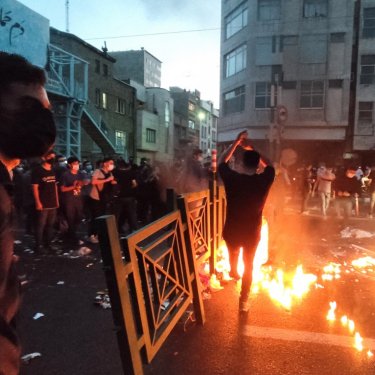Iran reins in access to Instagram and WhatsApp, last platforms available to Iranians

The Iranian government’s decision to restrict access to Instagram and WhatsApp – which had been circulating information about a wave of protests triggered by the death of Mahsa Amini in police custody following her arrest by the morality police on 16 september – is an unprecedented attack on the right to news and information in Iran, says Reporters Without Borders (RSF).
“By targeting Instagram and WhatsApp, the Iranian authorities have taken a new step towards total domination of the national Internet,” said Vincent Berthier, the head of RSF’s Tech Desk. “Amid frequent Internet shutdowns across the country, Instagram and WhatsApp – previously spared censorship – are now being restricted. The government is sending a clear message: that no photos or videos of the protests can be circulated online. We demand the immediate lifting of all restrictions that deny Iranians the right to information.”
The Internet watchdog NetBlocks reported on 21 September that access to Instagram was restricted in Iran. At the same time, the news website IranWire reported that many Iranians were no longer able to access what is the country’s most popular social media. Instagram constituted 81.92% of social media traffic in Iran in 2021. Access to the WhatsApp messaging service, which had still been accessible in recent days, was restricted a few hours after Instagram, NetBlocks said.
Iranians had been using these two social media platforms since 17 September to share photos and videos of the protests prompted by the death of Mahsa Amini, a young Iranian Kurdish woman, after the morality police arrested her for being “improperly dressed” on 16 September. The crackdown on the protests has resulted in at least 31 deaths in the space of six days according to the Oslo-based NGO Iran Human Rights (IHR), while the authorities had earlier reported 17 deaths.
Total Internet shutdown in Iranian Kurdistan
The Islamic Republic has imposed many Internet shutdowns since the start of the protests, and the shutdown has been complete in western Iran’s Kurdistan province, where Amini was from and where the first protests began. Other partial Internet restrictions have been noted in Tehran and other major cities.
The authorities have issued contradictory statements about Internet censorship. After initially saying on 21 September that Internet restrictions could be imposed for security reasons, ICT minister Issa Zarepour insisted he had been misquoted. Acknowledging that there had been temporary restrictions, he said these had been resolved and that the communication network no longer had any problems. He did not, however, refer to the possibility of any future Internet blocking or restrictions.
Such restrictions are unfortunately only too common in Iran. The authorities have almost total control over the Internet within the country. Since 2011, the state has invested in a “national Iranian Internet” project that tries to make Iranians connect through a network controlled by the authorities before they attempt to access content located abroad. As a result of this investment, the proportion of Iranians connecting via this tightly controlled national Internet has grown from 23% in 2012 to 84% now.
